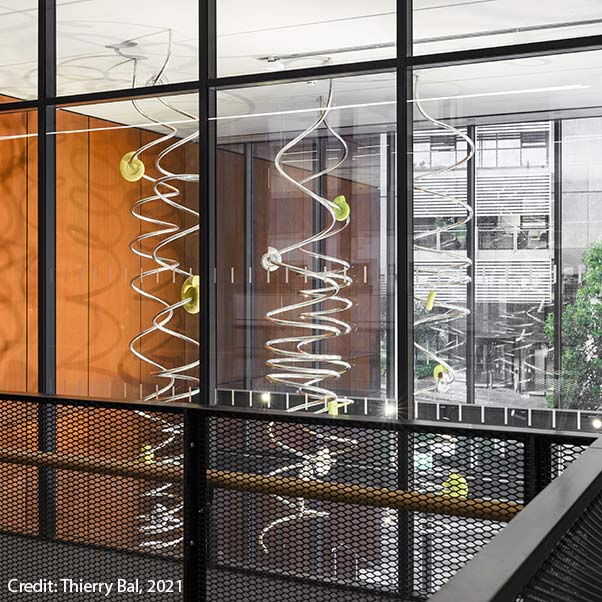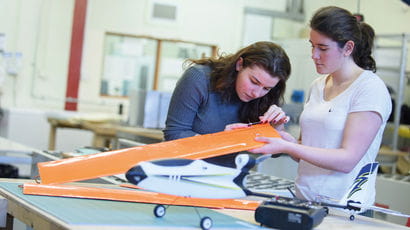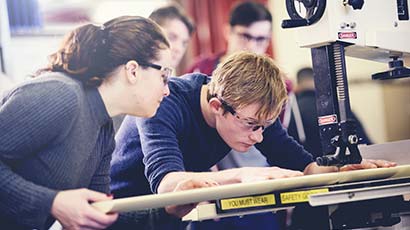Art in the Engineering building
Showcasing an art installation by Alice Channer.
UWE Bristol has commissioned artwork by Alice Channer to mark the inauguration of our School of Engineering building.
Alice's ‘Nanowires’ installation is a figurative sculpture, whose engineered industrial form, materials and process of making has been inspired by many sources but, most importantly, through engagement with the staff at the School of Engineering.
Through their discussions she consulted with Professor Ioannis Ieropoulos, Research Professor in Bioenergy and Self-Sustainable Systems at UWE Bristol and Director of the Bristol BioEnergy Centre at the Bristol Robotics Laboratory, which identified particular parts of the bodies of the bacteria with which he works and acted as fertile inspiration for her work.
Alice is interested in artworks that are authored by materials and processes as much as by herself and in Professor Ieropoulos’ work with bacteria. She found a common fascination – to her, the bacteria are themselves engineers, in ways human engineers can only dream of.

Inspired by primitive life forms
The lively bodies of extremophile bacteria, whose capacity to breathe anaerobically using rocks and minerals instead of oxygen, are put to work by UWE Bristol engineers to generate electricity.
For Alice, this is inspirational material and the resonance of her passions with those of the School of Engineering has been inspiring to witness in the development of the sculpture. Her interest in primitive life forms includes the spiralled shells of ancient ammonites, cast by non-human authors hundreds of millions of years ago which are also referenced in the sculpture.

"I want to use sculpture to stretch out, slow down and speed up industrial, post-industrial and ‘natural’ production processes. This is so that I can make these processes more visible to myself and to others, and to attune us to the multiple embodiments and disembodiments involved."
Alice Channer Artist
See more of 'Nanowires'
Three questions with Alice Channer
Watch Alice describe her artwork and inspiration, discuss her collaboration with UWE Bristol, and describe how it feels to see her artwork installed in the Engineering building.
Three questions with Professor Ieropoulos
Professor Ieropoulos discusses the technology he developed that inspired the artwork, the process on working with the artist, and why collaborations between artists and scientists are important.
Artist profile
Alice Channer, who has exhibited widely nationally and internationally, describes her work as a kind of 21st-century process art.
This is her first permanent commission and the installation was curated and produced by Field Art Projects. 'Nanowires' was made from rolled and mirror-polished aluminium tube, and sand-cast, vapor-blasted, chromed and painted aluminium.
Previous works have used diverse material combinations, ranging from spider crab shells and stainless steel, to pelletized and recycled plastic and Corten steel.
You may also be interested in

School of Engineering
Our staff work in integrated teams, covering a range of subject disciplines, to deliver programmes of research and study that aim to challenge, enthuse and stimulate, providing you with the best possible positioning for your future career.

Campus and facilities
We've invested £300 million into our modern facilities, creating the most effective and empowering setting for our students and people to discover their potential.

Research in the School of Engineering
Our research applies novel engineering, statistical and mathematical techniques to solve problems of direct relevance to industry, society and the environment.












